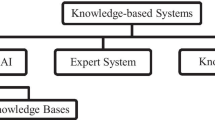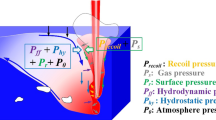Abstract
Based on the Fourier transform, a new shape descriptor was proposed to represent the flame image. By employing the shape descriptor as the input, the flame image recognition was studied by the methods of the artificial neural network(ANN) and the support vector machine(SVM) respectively. And the recognition experiments were carried out by using flame image data sampled from an alumina rotary kiln to evaluate their effectiveness. The results show that the two recognition methods can achieve good results, which verify the effectiveness of the shape descriptor. The highest recognition rate is 88.83% for SVM and 87.38% for ANN, which means that the performance of the SVM is better than that of the ANN.
Similar content being viewed by others
References
ZHANG Jing, LIU Xiao-yan. Measuring the temperature of calcining zone in rotary kiln by flame sequence process[J]. Journal of Electronic Measurement and Instrument, 1999, 13(4): 67–71. (in Chinese)
YI Zheng-ming, ZHOU Jie-ming, LIU Zhi-ming, LI Yuan-feng. Study on flame monitoring system of rotary kiln based on image processing[J]. Control and Instruments in Chemical Industry, 2005, 32(5): 54–56. (in Chinese)
WEI Zhao-yi. Optical flow algorithm and research on its application to rotary kiln status recognition[D]. Shenyang: Northeastern University, 2005: 53–55. (in Chinese)
RAJ B Y, NAVEEN K N, ARUN K G, VINOD K R. Retrieval and classification of objects using generic Fourier, Legendre moment, and wavelet Zernike moment descriptors and recognition using joint transform correlator[J]. Optics and Laser Technology, 2008, 40(3): 517–527.
PAPAKOSTAS G A, BOUTALIS Y S, PAPAODYSSEUS C N, FRPGOULIS D K. Numerical stability of fast computation algorithms of Zernike moments[J]. Applied Mathematics and Computation, 2008, 195(1): 326–345.
CHONG Y W, RAVEENDRAN P. On the computational aspects of Zernike moments[J]. Image and Vision Computing, 2007, 25(6): 967–980.
KIM H K, KIM J D. Region-based shape descriptor invariant to rotation, scale and translation[J]. Signal Processing: Image Communication, 2000, 16(1): 87–93.
BOBER M. MPEG-7 visual shape descriptors[J]. IEEE Transactions on Circuits Systems Video Technology, 2001, 11(6): 716–719.
DU Ji-xiang, HUANG De-shuang, WANG Xiao-feng. Shape recognition based on neural networks trained by differential evolution algorithm[J]. Neurocomputing, 2007, 70(4): 896–903.
XUE Z, STAN Z L, EAM K T. Bayesian shape model for facial feature extraction and recognition [J]. Pattern Recognition, 2003, 36(12): 2819–2833.
XIAO Dong-rong, HOU Jian-min. Application research of neural network in fault diagnosis[J]. Journal of Central South University of Technology: Natural Science, 2003, 34(1): 206–208. (in Chinese)
DING De-xin, ZHANG Zhi-jun. Artificial neural network based on inverse design method for circular sliding slopes[J]. Journal of Central South University of Technology, 2004, 11(1): 89–92.
BISHOP C M. Neural networks for pattern recognition[M]. New York: Oxford University Press, 1995: 216–302.
RAQUEL F L. Modelling of insurers’ rating determinants: An application of machine learning techniques and statistical models[J]. European Journal of Operational Research, 2007, 183(3): 1488–1512.
VAPNIK V. Statistical learning theory[M]. New York: John Wiley and Sons, 1998: 98–208.
HSU C W, LIN C J. A comparison of methods for multi-class support vector machines[J]. IEEE Transactions on Neural Networks, 2002, 13(2): 415–425.
Author information
Authors and Affiliations
Corresponding author
Additional information
Foundation item: Project(60634020) supported by the National Natural Science Foundation of China
Rights and permissions
About this article
Cite this article
Zhang, Hl., Zou, Z., Li, J. et al. Flame image recognition of alumina rotary kiln by artificial neural network and support vector machine methods. J. Cent. South Univ. Technol. 15, 39–43 (2008). https://doi.org/10.1007/s11771-008-0009-8
Received:
Accepted:
Published:
Issue Date:
DOI: https://doi.org/10.1007/s11771-008-0009-8




